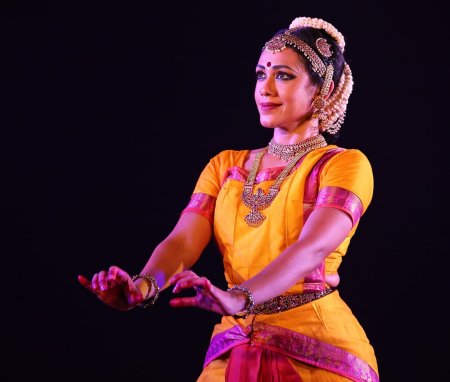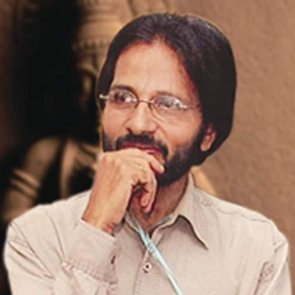
|
 |

|
 |
Elegance, aesthetic density and beyond - V. Kaladharan e-mail: kaladh@rediffmail.com July 9, 2023 (The views/opinions expressed in this article are of the writer.) It's now a little over three decades I've been watching legends in the highly evolved performing arts of Kerala on and off stage. It is saddening to note that all of them except Kalamandalam Gopi, the marvel of Kathakali stage, are no more. This vast experience plus my inescapable fixations might have created in me a deep impression that our aesthetically refurbished art forms are inextricably linked to their nativity so much so that it is nigh impossible for non-natives to imbibe the aesthetic intricacies of the artform they have chosen to delve deep into. I can never imagine a non-Malayalee perfectly identifying with the chaturavidhaybhinaya of Kutiyattam or Kathakali despite his/her intensive training in and fierce devotion to these complex art traditions. Am I becoming a cultural fundamentalist? I thought the same is true when it comes to the stylized performing arts of other States too. For instance, Bharatanatyam, performed nowadays by every Tom, Dick and Harry, is the prerogative of those born and brought up and groomed in Chennai. Although nothing prevents aspirants from Karnataka, Kerala or Andhra Pradesh from undergoing training in and conducting recitals of Bharatanatyam, the quintessence of the dance form concerned, I had a pre-conceived notion, is impeccably safeguarded by the exceptionally talented dancers hailing from Chennai. Just recently Shweta Prachande, the young dancer from Pune, disabused me or to be more precise, shattered my conviction. She, in fact, inflicted a deep wound on my pride.  Shweta Prachande When I first saw Shweta performing Bharatanatyam on stage almost a decade back, the grace of her angikabhinaya left a profound impression in my mind although I felt that she would be more striking had she been slightly taller. Since then, I have had several opportunities to watch her recitals in Chennai and outside. Each one, I should admit, turned out to be an improved version of the previous one in the realms of angika, satwika and aharyabhinayas. In the same breath I should also let you know that each time I felt she does have an amazing 'altitude' on stage. In the latest Dance Festival held at the Madras Music Academy, I was fortunate to see her perform the immortal Varnam of the Tanjore Quartet, "Sakhiye intha velayil" in raga Anandabhairavi set to adi tala. The visual phrases she weaved as the Nayika awaiting reunion with her Lord Rajagopala conveyed through her hand gestures, movements and expressions to the Sakhi were a great treat to me and to the like-minded spectators. The jathi segment too was spectacular as the architectonic splendour of her angikabhinaya spontaneously jelled with the music. Equally fascinating were her angavikshepaas and expressions during the charanaswaras. She embodied the artistic finesse and deportment of her Guru, Priyadarsini Govind. Following the Thillana in raga Nalinakanti, Shweta moved on to an item titled Panchali Sapatham infused with a heavy dose of drama. Meant for the Nanajanam (lay spectators), the 'thematic presentation' probably appealed to a sizeable part of the audience. In this context I may be allowed to take a diversion. Dance and the rasabhinaya While rasabhinaya commonly interpreted as facial expressions is an integral component of Kutiyattam, the sole extant form of traditional Sanskrit theatre tradition in India, and Kathakali, the classical dance-theatre, its significance in the latter is subjected to severe restrictions especially in the highly acclaimed Kalluvazhichitta. This school of Kathakali evolved in central Kerala in the 19th century is rather rooted in dance than in drama. The four plays of Kottayath Thampuran considered as the four pillars of Kathakali are dedramatized in the Kalari and on stage for the most part. The theory postulated here is that if a play has more drama in it there is less of 'Kathakali' and if it has more dance, it denotes the dominance of Kathakali. On the contrary, in Kutiyattam, dance is inconsequential while drama holds sway in the treatment of the text, contexts and the characters. The genesis and progress of all the traditional Indian dance forms are inexplicably interspersed with what constitutes dance; its manifold expressive devices. While dance concerns itself with the movements and expressions of the dancer from head to foot, drama can be channelized into rasabhinaya (facial expressions, either eight or nine or even more). That's why eye-exercises and facial expressions are crucial to Kutiyattam. By borrowing these techniques of acting, Kathakali too proved its allegiance to drama. But an actor/dancer of Kathakali has to inevitably establish a symmetry between dance and theatre. His/her theatrical panache shouldn't be at the cost of the dance demanded of him/her during the execution of the diverse kalasams (dance units) and non-textual improvisations. In other words, Nritya (textual dance) and Nritta (non-textual dance) are the hallmarks of a Kathakali dancer. Unlike Kutiyattam or Kathakali actors/dancers, Bharatanatyam, Kuchipudi, Odissi or Mohiniyattam dancers do not require exclusive training in eye-movements or rasabhinaya. While Kutiyattam and Kathakali, viewed from a certain angle, are arts of exaggeration, none of the aforementioned dance forms can afford excesses. While the aharya (make-up and costuming) of both Kutiyattam and Kathakali is befitting to their exaggerated angika and satwikabhinayas, the aharya of the stylized Indian dance forms do carry undeniable realistic tones. When Arjuna in the Kutiyattam play, Subhadradhananjayam, expresses extreme wonder while seeing the moths that fall into the sacrificial fire instantly rise up and fly away, the audience watching this esoteric theatre never derides the actor in the role for his 'overacting' whereas if a Bharatanatyam or Kuchipudi dancer protrudes his/her eyes to show Adbhuta (wonder) and moves the eye-balls vertically, the prekshakas, whatever the context, find it bizarre. It is seemingly on account of the fact that the facial make-up and costumes of the dancers fail to synchronize with the overutilization of the upangas. In short, dramatization remains a dreaded frontier for those dancers who claim to be the true inheritors of tradition. Over a quarter century ago, I did an almost exhaustive interview with the late patriarch of Kutiyattam, Ammanur Madhava Chakyar for the AIR Archives. In the course of our intense conversation, he told me that he would forbid his students from watching Kathakali lest they are influenced by its histrionic features. In a similar vein, I would request young Bharatanatyam/Kuchipudi/Odissi dancers not to get carried away by expressional mannerisms of other dance forms. To be frank, rasabhinaya is no panacea for a dancer's disinclination to execute the adavus immaculately. Nowadays, there is a growing tendency on the part of the dancers of the day to explore the nuances of Kutiyattam / Nangiarkoothu / Kathakali in their quest for reinventing themselves on stage. I have even come across dancers borrowing Mizhavu, the principal percussion instrument of Kutiyattam, either to add spice to or to defamiliarize their background music. While I do understand their lust for novelty, I am afraid whether they have seriously pondered the viability and desirability of having Mizhavu as a percussion instrument for dance as it can produce only two sounds, tha, thom. Moreover, modulation is not so easy on the Mizhavu. Beacons Fortunately, the young generation Bharatanatyam dancers have before them great icons in the field whose idioms are gloriously distinctive. If they want to ensure nuanced rasabhinaya and karanas as their forte, they can follow the inimitable performer and trendsetter, Dr. Padma Subrahmanyam. If they desire to transform their angika and satwikabhinayas into visual poetry, they can close in on to and identify with the aesthetic implications of the recitals of Alarmel Valli. Her choice of the lyrics like the eco-sensitive Pushpavilapam will also be a guiding force to the upcoming dancers. If the young dancers have a penchant for narrative visual frames having some dramatic undertones, let them take a look at the stylistic exuberance of Malavika Sarukkai. She, I remember, more than a decade back, did an item called "Mareechavadham" at the Music Academy Dance Festival. She had brought in characters, Mareecha disguised as the deer, Sita, Rama, Lakshmana, the sage and Ravana in the narrative and made it memorable in her own incomparable style. She neither went in for overdramatization nor did she embark upon uncharted terrains to simply stupefy the audience. Let me now come back to Shweta. Although it is her presentation of Panchali Sapatham that provoked me to comment sharply on the contemporary dance scenario, there is absolutely no intention on my part to target Shweta for the whole turn of events. On the other hand, I could fondly observe that her creative pursuits hardly ever compromise on the language of Bharatanatyam over which she commands a reasonable degree of authority.  Former Deputy Registrar of Kerala Kalamandalam, V Kaladharan is also an art critic. He has published several articles at the academic level. 'From Meditative Learning to Impersonal Pedagogy' was published in an anthology 'Qui Parley' initiated and released by scholars and writers from the University of California, Berkeley. His articles on Indian performing arts and literature regularly appear in magazines and journals, and in the Friday Page of The Hindu. Post your comments Pl provide your name and email id along with your comment. All appropriate comments posted with name & email id in the blog will also be featured in the site. |